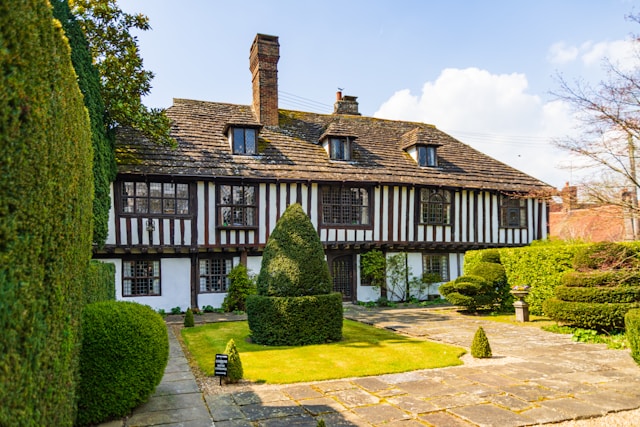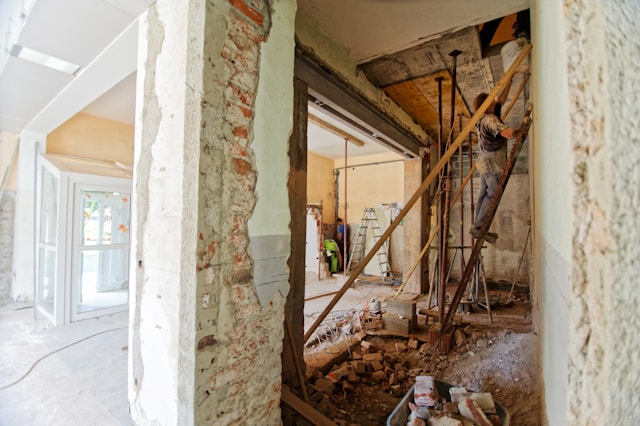
Foto von Gary J Stearman auf Unsplash
Starting the process of becoming a homeowner can be exciting and intimidating, particularly if you’re thinking about buying a fixer-upper. These homes, which are frequently teeming with potential and history, offer a special chance to design the ideal house that suits your preferences and requirements. But turning a fixer-upper into a haven requires careful planning, wise financial management, and a distinct vision. With the help of this guide, you’ll be able to successfully navigate this process and turn your fixer-upper into a profitable investment instead of a never-ending project. Converting your vision into reality requires knowing the nuances of purchasing and remodeling a fixer-upper, regardless of your preference for older homes or the possibility of personalizing every detail.
Assessing the Property
When purchasing a fixer-upper, a comprehensive evaluation of the property is the first step. This calls for more than just a quick walkthrough; a professional inspection is needed to find structural problems, problems with the plumbing and electrical systems, problems with the roofing, and other important components. It is imperative to engage the services of a certified home inspector or contractor for this assessment, as they possess the ability to reveal concealed issues that may not be instantly noticeable. Determining whether the property is worth the investment requires knowledge of the extent of repairs that must be done. It’s critical to distinguish between major repairs, like foundation work or roof replacement, and minor updates, like paint and flooring, as the latter can have a substantial influence on your timeline and budget.
Setting a Realistic Budget
Establishing a reasonable spending plan is essential when buying a fixer-upper. The purchase price, the anticipated cost of renovations, and a contingency fund for unforeseen expenses should all be included in this budget. To get a better idea of renovation costs, which can vary greatly depending on the location and scope of work, it’s advisable to get quotes from contractors. Furthermore, take into account the possible return on investment (ROI) by comparing the property’s post-renovation value to comparable local residences. A well-thought-out budget helps you prioritize home improvements that will increase its value and guarantee you don’t overspend. Remember that renovations may reveal unforeseen problems like old plumbing or wiring, so having a safety net is essential.
Managing the Renovation

Foto von Milivoj Kuhar auf Unsplash
A successful outcome depends on the renovation process being managed effectively. This entails selecting trustworthy contractors like those experts in gutter replacement from Brisbane, for instance, because these people know what they’re doing. Also, you need to keep a close eye on developments and make choices quickly. Effective communication with your contractors is essential to guaranteeing that the project follows the schedule and that any problems are resolved right away. Additionally, overcoming unforeseen obstacles can be facilitated by being adaptable and ready to make changes as necessary. Frequent site visits and progress meetings will help you stay on top of the project’s progress and address any issues before they become more serious.
Securing Financing
Although financing a fixer-upper can be trickier than financing a regular house purchase, there are loan programs specifically tailored to these kinds of properties. Renovation loans streamline the financing process by combining the cost of the renovation and the purchase of the home into a single mortgage. Working with a lender knowledgeable about renovation loans is essential to a seamless application process. It’s important to comprehend the terms and conditions of these specialized loans because they frequently have unique requirements and eligibility criteria. To guarantee that your renovation project has enough funding from the beginning to the end, proper financing is essential. Furthermore, depending on your financial circumstances, looking into alternative financing options like personal loans or home equity lines of credit may provide you with more flexibility.
Planning the Renovation
The next stage is to plan the renovation after funding has been obtained. This entails putting together a thorough renovation plan that specifies the materials, timetable, and extent of the work. Working together with a designer or architect can help you make the most of the space while keeping costs down. Give top priority to remodeling projects that improve the home’s usability and livability, such as modernizing bathrooms and kitchens, boosting energy efficiency, and taking care of any safety issues. A well-structured renovation plan lowers the possibility of expensive delays and guarantees that the project continues on schedule.
Purchasing a fixer-upper is a big project that needs careful management, budgeting, and planning. Even though the process could be difficult, the payoff of designing a room that suits your needs and expresses your unique style is priceless. Your fixer-upper can turn into a worthwhile investment and a house you’ll be happy to call home with the appropriate strategy. A home that truly represents your vision and hard work can be the outcome of an enjoyable and fulfilling transformation journey if you approach the process with patience and an optimistic outlook.

